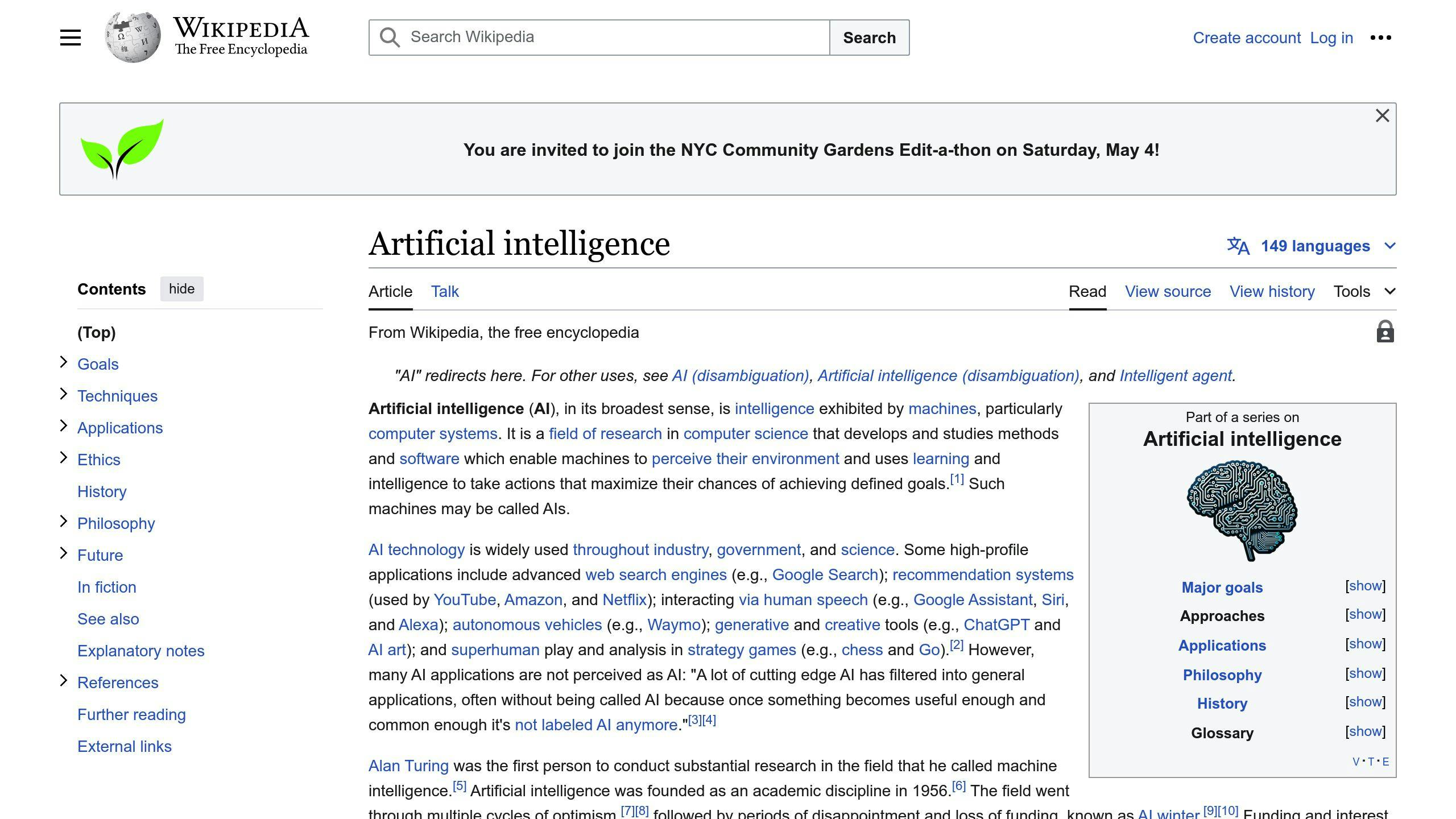May 15, 2024

AI is transforming the restaurant industry by personalizing the dining experience in the following 9 ways:
By leveraging AI, restaurants can increase customer satisfaction, loyalty, and revenue through personalized and efficient operations.
BenefitDescriptionIncreased Customer SatisfactionTailored experiences catering to individual tastes and needsImproved Operational EfficiencyAutomation of tasks reduces labor costs and minimizes wasteEnhanced Customer LoyaltyPersonalized services foster loyalty and repeat business

AI-powered targeted marketing campaigns have changed the way restaurants connect with customers. By analyzing customer data, restaurants can create personalized promotions, offers, and recommendations that cater to individual preferences.
Targeted marketing campaigns help restaurants provide a more tailored experience for their customers. For example, a restaurant can send personalized offers to customers on their birthdays or special occasions, making them feel valued.
AI-driven targeted marketing campaigns also improve operational efficiency by automating the process of creating and sending personalized promotions. This saves time and resources, allowing restaurants to focus on other critical aspects of their business.
Benefits of AI-Powered Targeted Marketing Campaigns
BenefitsDescriptionIncreased customer loyaltyPersonalized promotions and offers make customers feel valuedImproved operational efficiencyAutomation saves time and resourcesEnhanced customer experienceTailored experience for each customer
By leveraging AI in targeted marketing campaigns, restaurants can create a more personalized and engaging experience for their customers, leading to increased loyalty and retention.
AI helps restaurants offer personalized menu recommendations by analyzing customer preferences, ordering history, and dietary restrictions. This approach enhances the customer experience and increases the chances of upselling and cross-selling.
Personalized menu recommendations make customers feel understood and valued. When a restaurant suggests menu items that align with their preferences, customers feel more connected to the brand, leading to increased loyalty and retention. AI-powered recommendations can also help customers discover new dishes and flavors.
AI-powered personalized menu recommendations improve operational efficiency by streamlining kitchen operations and reducing food waste. By analyzing ordering patterns and customer preferences, restaurants can optimize their inventory management, reducing costs and improving resource allocation.
BenefitsDescriptionEnhanced customer experiencePersonalized recommendations make customers feel valuedIncreased salesAI-powered suggestions increase chances of selling more itemsEfficient operationsOptimized inventory management reduces food waste and costs
By using AI-powered personalized menu recommendations, restaurants can create a more tailored and engaging experience for their customers, leading to increased loyalty, retention, and revenue.
AI technology helps restaurants optimize their ordering processes, making them more efficient and customer-centric. By analyzing customer preferences, ordering history, and dietary restrictions, AI provides tailored menu recommendations and personalized services.
AI-driven ordering systems enable customers to place orders quickly and easily, reducing wait times and improving overall satisfaction. Personalized menu recommendations and automated ordering processes help customers discover new dishes and flavors, increasing the chances of upselling and cross-selling. Moreover, AI-powered systems provide customers with real-time updates on their orders, enhancing transparency and trust.
Streamlined ordering and reservations also improve operational efficiency by reducing errors, minimizing wait times, and optimizing kitchen operations. AI-powered systems analyze ordering patterns and customer preferences to optimize inventory management, reducing food waste and costs. By automating mundane tasks, restaurants can free up staff to focus on more critical aspects of customer service.
BenefitsDescriptionImproved Customer ExperiencePersonalized menu recommendations and automated orderingIncreased EfficiencyOptimized kitchen operations and reduced wait timesCost SavingsReduced food waste and optimized inventory management
By leveraging AI technology to streamline ordering and reservations, restaurants can create a more personalized, efficient, and cost-effective dining experience, ultimately driving customer loyalty and revenue growth.
AI-powered inventory management ensures that restaurants always have the right items in stock. This leads to reduced wait times, improved order fulfillment, and increased customer satisfaction.
AI-driven inventory management automates routine tasks, such as tracking inventory levels and identifying slow-moving items. This enables restaurants to reduce waste, minimize overstocking, and free up staff to focus on customer service.
AI-powered inventory management analyzes customer preferences and ordering history to tailor menu offerings and inventory levels. This increases the chances of upselling and cross-selling.
BenefitsDescriptionImproved Customer ExperienceReduced wait times and improved order fulfillmentIncreased EfficiencyAutomated inventory tracking and optimized stock replenishmentPersonalized ExperienceTailored menu offerings and inventory levels based on customer preferences
By using AI technology to improve inventory management, restaurants can create a more efficient, personalized, and customer-centric dining experience, ultimately driving customer loyalty and revenue growth.
AI-powered customer service helps restaurants offer personalized experiences tailored to individual customers' preferences and needs. By analyzing customer data, AI systems provide personalized recommendations, offers, and communications, making customers feel valued and understood.
AI-driven customer service chatbots and virtual assistants provide instant responses to customer inquiries, ensuring efficient and accurate communication. This leads to:
Additionally, AI-powered systems help restaurants identify and address customer concerns, leading to improved customer loyalty and retention.
AI-powered customer service systems automate routine tasks, freeing up staff to focus on more complex and high-value tasks. This enables restaurants to:
BenefitsDescriptionReduce labor costsAutomate routine tasksImprove operational efficiencyFocus on high-value tasksEnhance customer experienceProvide better service
By leveraging AI technology to enhance customer service, restaurants can create a more personalized, efficient, and customer-centric dining experience, ultimately driving customer loyalty and revenue growth.
Predictive analytics helps restaurants make informed decisions by analyzing historical sales data, seasonal trends, and external factors. This enables them to gain valuable insights into customer behavior and preferences.
Predictive analytics ensures that popular menu items are always available, reducing wait times during busy periods. This leads to increased customer satisfaction and loyalty.
By accurately forecasting demand, restaurants can optimize their inventory management, reducing waste and saving costs. Predictive analytics also helps restaurants schedule staff more efficiently, ensuring they have the right number of employees during peak and non-peak hours.
With predictive analytics, restaurants can empower their employees to make informed decisions, providing them with the insights they need to optimize their workflows and improve customer service.
Benefits of Predictive Analytics
BenefitsDescriptionImproved Customer ExperienceReduced wait times and increased customer satisfactionEfficient OperationsOptimized inventory management and staff schedulingEmployee EmpowermentInformed decision-making and improved customer service
By leveraging predictive analytics, restaurants can create a more efficient, customer-centric, and profitable business model, ultimately driving growth and success.
Automated food preparation helps restaurants provide consistent food quality, reduce wait times, and increase customer satisfaction. With automated cooking, each dish is prepared to the same high standard every time, ensuring that customers know what to expect with every visit.
Kitchen automation streamlines operations, reducing the time it takes to prepare and serve meals. This leads to shorter wait times for patrons, allowing restaurants to accommodate more customers, especially during busy periods. Automation also reduces food waste and labor costs.
Automated food preparation frees up kitchen staff to focus on more creative and skill-intensive aspects of their work, such as experimenting with new recipes and enhancing plate presentation.
Benefits of Automated Food Preparation
BenefitsDescriptionImproved Customer ExperienceConsistent food quality and reduced wait timesEfficient OperationsReduced food waste, labor costs, and shorter wait timesEmployee EmpowermentFocus on creative and skill-intensive work
By automating food preparation, restaurants can create a more efficient, customer-centric, and profitable business model, ultimately driving growth and success.
Personalized dining experiences are a key aspect of AI-powered restaurants. By using customer data and preferences, restaurants can create tailored experiences that cater to individual tastes and needs.
AI-driven personalization enables restaurants to offer menu suggestions, promotions, and services that align with a customer's preferences, dietary restrictions, and allergies. This level of personalization enhances customer satisfaction and fosters loyalty and repeat business.
Personalized dining experiences can be further enhanced through AI-powered technologies such as chatbots, virtual assistants, and mobile apps. These tools enable customers to interact with restaurants in a more seamless and efficient manner, receiving personalized recommendations, ordering, and making reservations with ease.
AI-powered personalization also streamlines restaurant operations, enabling staff to focus on more creative and skill-intensive aspects of their work. By automating tasks such as menu planning, inventory management, and customer service, restaurants can reduce labor costs, minimize waste, and optimize their supply chain.
Benefits of Personalized Dining Experiences
BenefitsDescriptionImproved Customer SatisfactionTailored experiences catering to individual tastes and needsIncreased LoyaltyEnhanced customer satisfaction fosters loyalty and repeat businessOperational EfficiencyAutomation of tasks reduces labor costs, minimizes waste, and optimizes supply chain
By incorporating AI-powered personalization, restaurants can create a more efficient, customer-centric, and profitable business model, ultimately driving growth and success.
Immersive dining experiences are changing the way restaurants engage with customers. By using AI-powered technologies like virtual and augmented reality, restaurants can create unique and memorable experiences.
AI-driven immersive dining experiences can be tailored to individual preferences. Restaurants can suggest menu items, wine pairings, and ambiance settings that align with a customer's tastes and preferences.
Immersive dining experiences can be further enhanced through AI-powered technologies. These technologies enable customers to explore new culinary destinations, interact with chefs, and even participate in cooking classes, all from the comfort of their seats.
The integration of AI-powered immersive dining experiences is transforming the restaurant industry. Restaurants can create futuristic dining experiences that are both memorable and Instagram-worthy.
Immersive Dining ExperienceDescriptionVirtual Reality DiningExplore new culinary destinations and interact with chefs in a virtual environmentAugmented Reality DiningEnhance the dining experience with AR-powered ambiance settings and interactive cooking classesPersonalized Culinary JourneysReceive tailored menu recommendations and wine pairings based on individual preferences
The restaurant industry is undergoing a significant transformation, and AI is playing a key role in this change. By personalizing dining experiences, restaurants can increase customer satisfaction, loyalty, and ultimately, revenue.
AI-powered solutions can improve operational efficiency, customer engagement, and overall success. By leveraging AI-driven insights, restaurants can tailor their services to meet the unique needs and preferences of each customer, creating a loyal customer base that drives business growth.
As technology continues to advance, we can expect to see even more innovative applications of AI in the industry. By embracing AI-powered personalization, restaurants can stay ahead of the curve, delight their customers, and thrive in an increasingly competitive market.
Benefits of AI-Powered PersonalizationDescriptionIncreased Customer SatisfactionTailored experiences catering to individual tastes and needsImproved Operational EfficiencyAutomation of tasks reduces labor costs and minimizes wasteEnhanced Customer LoyaltyPersonalized services foster loyalty and repeat business
By adopting AI-powered solutions, restaurants can create a more efficient, customer-centric, and profitable business model, ultimately driving growth and success.

Enter your information in the form to receive a call from Loman and place an order like a customer would!